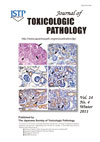Volume 18, Issue 1
Displaying 1-11 of 11 articles from this issue
- |<
- <
- 1
- >
- >|
Originals
-
2005 Volume 18 Issue 1 Pages 1-5
Published: 2005
Released on J-STAGE: April 08, 2005
Download PDF (431K) -
2005 Volume 18 Issue 1 Pages 7-11
Published: 2005
Released on J-STAGE: April 08, 2005
Download PDF (163K) -
2005 Volume 18 Issue 1 Pages 13-18
Published: 2005
Released on J-STAGE: April 08, 2005
Download PDF (373K) -
2005 Volume 18 Issue 1 Pages 19-25
Published: 2005
Released on J-STAGE: April 08, 2005
Download PDF (729K) -
2005 Volume 18 Issue 1 Pages 27-31
Published: 2005
Released on J-STAGE: April 08, 2005
Download PDF (238K) -
2005 Volume 18 Issue 1 Pages 33-39
Published: 2005
Released on J-STAGE: April 08, 2005
Download PDF (1645K) -
2005 Volume 18 Issue 1 Pages 41-46
Published: 2005
Released on J-STAGE: April 08, 2005
Download PDF (1082K) -
2005 Volume 18 Issue 1 Pages 47-52
Published: 2005
Released on J-STAGE: April 08, 2005
Download PDF (614K) -
2005 Volume 18 Issue 1 Pages 53-59
Published: 2005
Released on J-STAGE: April 08, 2005
Download PDF (199K)
Case Report
-
2005 Volume 18 Issue 1 Pages 61-63
Published: 2005
Released on J-STAGE: April 08, 2005
Download PDF (382K)
Short Communication
-
2005 Volume 18 Issue 1 Pages 65-68
Published: 2005
Released on J-STAGE: April 08, 2005
Download PDF (490K)
- |<
- <
- 1
- >
- >|
